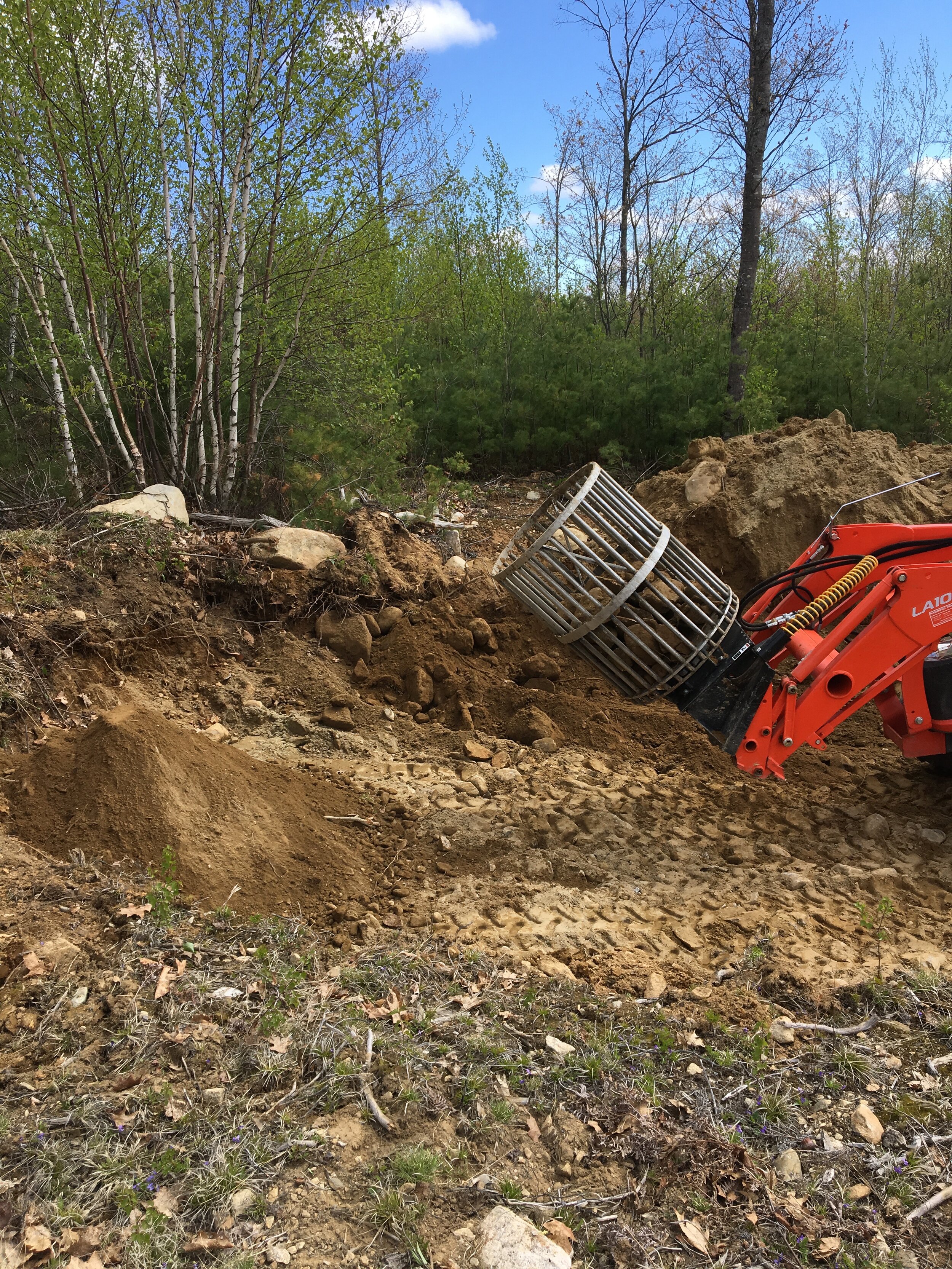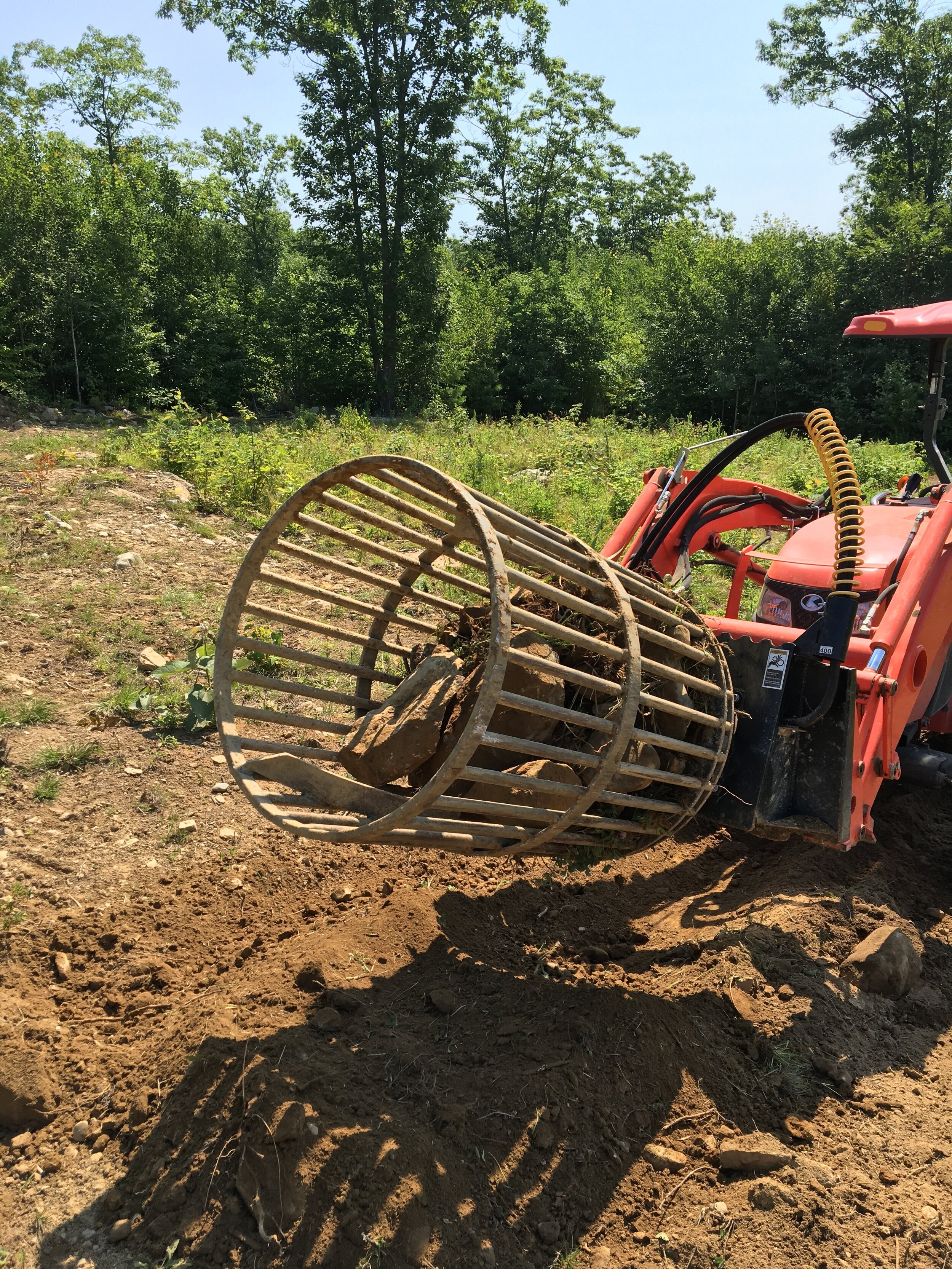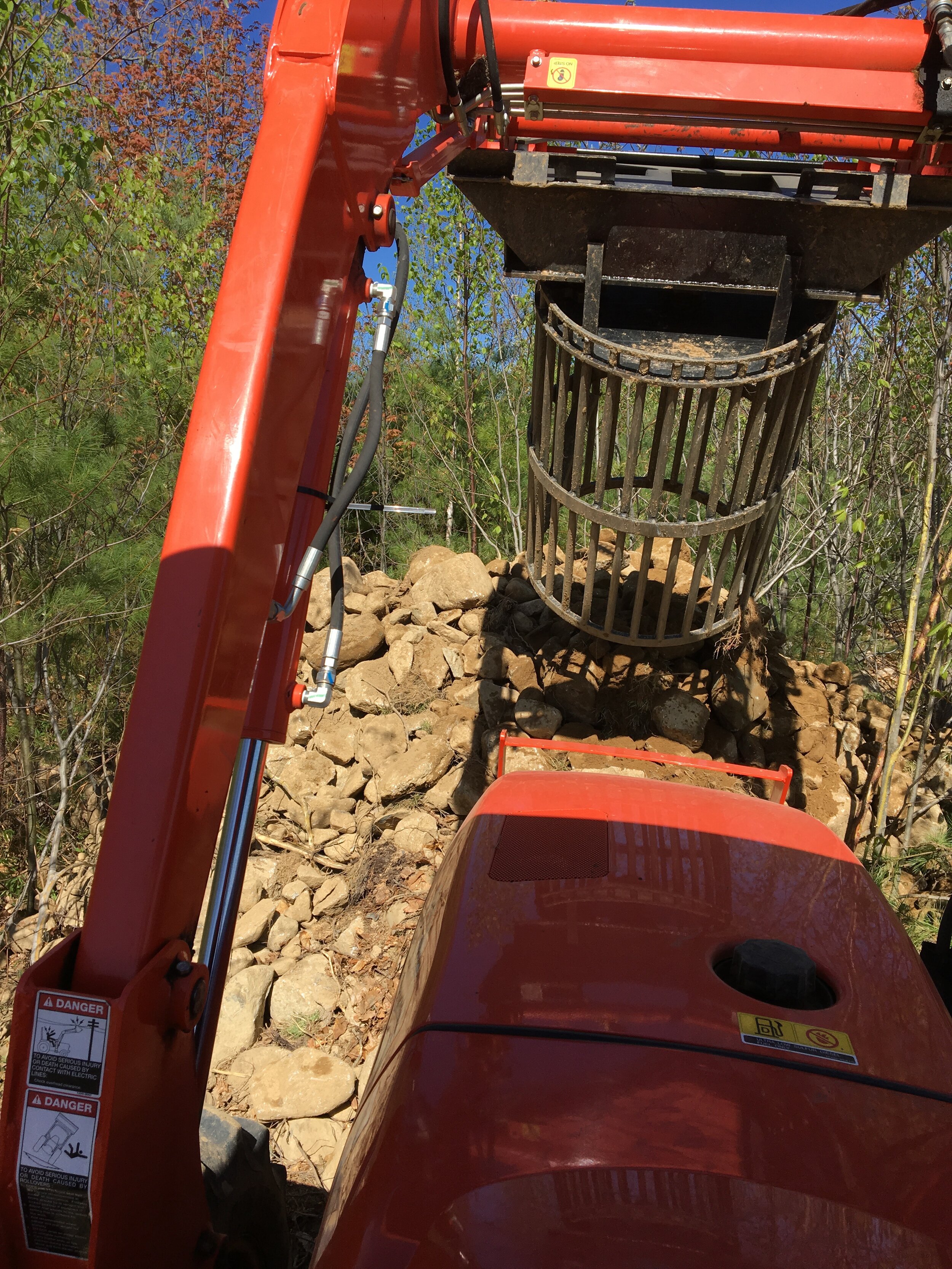Flexxifinger Quicker Picker Rock Picker
Review Date: March 2020
As you may have read in my land management section, the first parcel of land I purchased in the Augusta Maine Expanded Archery Zone was rocky - in many places it was gravel with a thin covering of topsoil. I spent the first year using my disk harrow to loosen the soil, raking the soil with a landscape rake to collect the rocks and wood debris, and then the front loader to scoop the piles up and dump them on the side of the food plot.
The problem with this approach was that I collected and scooped a lot of topsoil up with the junk, and too much good soil was discarded - topsoil that should be helping me grow forage in my food plots. I knew that there was a better way, so I searched online for solutions. Farmers that have deep topsoil can hire someone with a rock picking machine to come in and work their fields, but I couldn’t find one for rent in Maine and I my soil was probably too rocky. Used rock pickers were expensive and located in the Midwest. I looked for something that could be used for smaller parcels, with understandable technology, and strong construction that could withstand what I had in mind.
My search ended with the Flexxifinger Quicker Picker (see: https://flexxifinger.com).
The rock picker mounts on the front of a tractor or skid steer and has two hoses that connect to the hydraulic system. You operate it by scooping dirt and rocks into the barrel, lifting the picker up, and pushing a button on your loader stick that rotates the barrel - the button opens a valve that pumps hydraulic fluid through one hose, to a rotator that spins the barrel, and then the fluid travels back through the other hose to the tractor. As the barrel spins, dirt and debris smaller than 2.5 inches falls out and the larger rocks remain in the barrel. Push more material into the barrel, spin it again, and when its full you dump the rocks wherever you want them.
Flexxifinger makes two models of the Quicker Picker, the 400 and the 800. The barrel of the model 400 is 36 inches long with a diameter of 30 inches, while the 800’s barrel is 48 x 30. The 400 weighs 760 lbs. and has a capacity of up to 900 lbs., while the model 800 weighs 1165 lbs. and has a capacity of about 2000 lbs. My tractor’s loader can lift about 1000 lbs. (I think that’s in addition to the weight of the bucket) so the model 400 would be pushing the limits. In early 2016 I purchased the model 400 directly from the manufacturer in Saskatchewan and had it shipped to my farm. The cost was $6,801 including installed hydraulic couplers, shipping, and sales tax.
I really notice the weight of the picker when moving and operating with it on the front of the tractor. I have a Kubota MX 5200 52 HP tractor and I wouldn’t want to try the bigger picker model - the 400 is heavy enough and I am careful to be sure the center of gravity doesn’t get me into trouble on sloped ground. The Flexxifinger website only talks about the Quicker Picker being mounted to a skid steer, and the load calculator on the site is completely oriented to skid steers. I emailed them early in the process asking if their picker could go on a tractor, and the response was that about 60% of the pickers are being used on tractors - I’m not sure why they don’t mention that in their marketing. The quick detach system on my tractor works perfectly with the picker and I already had the front hydraulic connections and control buttons for opening and closing the jaws on my grapple bucket.
I have used the Quicker Picker extensively to remove rocks from multiple food plots, and to spin the rocks out of dirty gravel that I then used for road fill. I plan to continue working on food plots as needed, but to also go back and use the picker on the piles of dirt and debris that I collected when just using the disk harrow and landscape rake - I’m sure that there is significant amounts of topsoil in those debris piles.
When starting on a job it is helpful to first loosen the soil with a disk or plow so the picker has a easier time digging into the soil. The picker lifts and tilts like a tractor bucket, so I begin by laying the barrel down on the soil with a slight downward tilt. I move the control stick up, putting weight on the picker, while moving the tractor forward, and soil is pushed into the barrel. When the barrel is full, I tilt the picker up and lift it up fairly high so when I rotate it the material will stay in the barrel and rocks will not fall out the open end. I position the picker over the spot where I want the soil, and rotate the barrel so topsoil will sift out and rocks will stay behind. I repeat the process until the barrel is about half-full of rocks, then I drive over and dump the rocks where I choose.
Obviously the scoop, spin, and dump process takes time and isn’t as efficient as using a large rock picker that covers a wide swath of a field, picking rocks as easy as picking potatoes, but as explained earlier, a large rock picker isn’t an option for me. Most of my food plots are less than an acre, and the Flexxifinger Quicker Picker works very well. As I am working a plot before replanting, I can come in with the picker and get a bunch of rocks out - not perfect, but over time I should have better and better soil to plant.
The purchasing process and service from Flexxifinger was good, the picker is constructed from high quality steel that can stand up to the abuse it takes, and the internal mechanical parts are sealed and maintenance-free. It is heavy, expensive, and working a large plot of land takes a lot of time, but I haven’t found any better options for removing rocks from my fields. The Quicker Picker is a quality product and recommend it to anyone looking for a practical way to remove rocks from their food plots.





